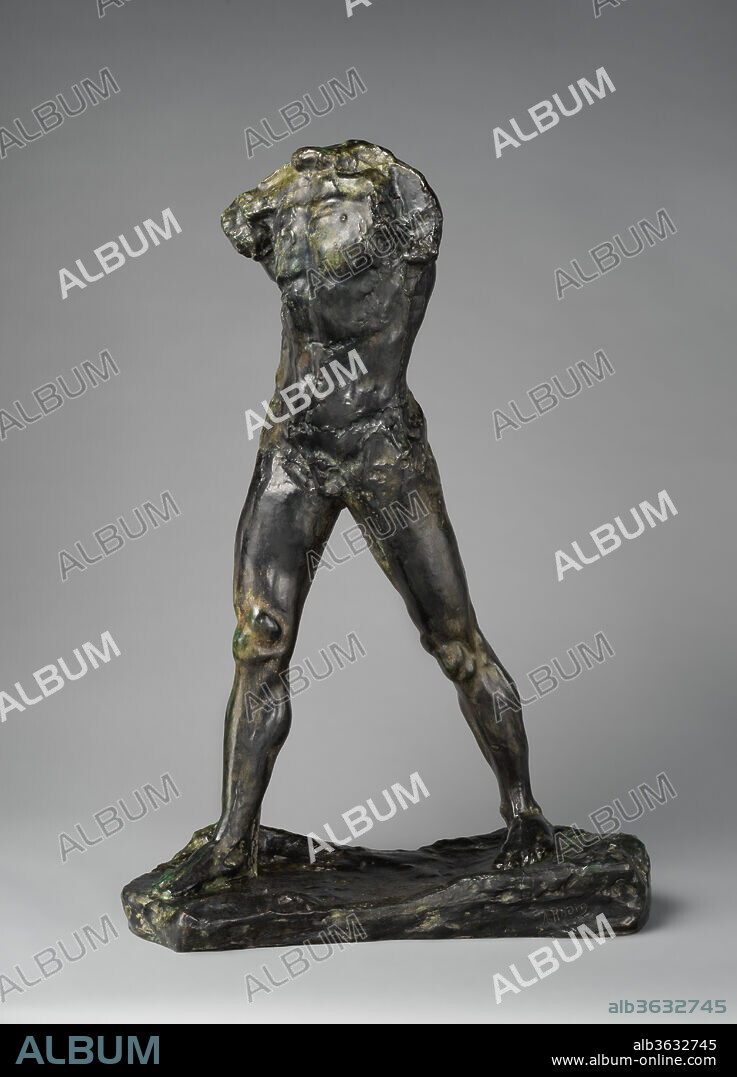alb3632745
AUGUSTE RODIN. The Walking Man (L'homme qui marche)

|
Ajouter à une autre Lightbox |
|
Ajouter à une autre Lightbox |



Avez-vous déjà un compte? S'identifier
Vous n'avez pas de compte ? S'inscrire
Acheter cette image.
Sélectionnez l'usage:

Auteur:
Titre:
The Walking Man (L'homme qui marche)
Légende:
Voir la traduction automatique
The Walking Man (L'homme qui marche). Artist: Auguste Rodin (French, Paris 1840-1917 Meudon). Culture: French. Dimensions: Overall (wt. confirmed): 33 1/2 in., 63 lb. (85.1 cm, 28.6 kg). Founder: Cast by Alexis Rudier (French). Date: modeled before 1900, cast before 1914.
A sculptural hybrid with a somewhat complicated history, The Walking Man was made from a cast of a torso that was probably a study for Rodin's Saint John the Baptist Preaching (1878) joined to a cast of the legs from another study for the Saint John. Rodin exhibited a plaster model of the resulting sculpture in his retrospective exhibition in the Place de l'Alma at the time of the Paris Exposition Universal of 1900. Between 1905 and 1907 he enlarged the sculpture and changed the title from A Study for Saint John the Baptist to The Walking Man. A bronze cast from the enlarged model was placed in the French embassy in Rome, then housed in the Palazzo Farnese.
The Walking Man displays not only Rodin's fascination with partial figures, reminiscent of antique sculptural fragments, but also his interest in the sculptural representation of the human body in sequential motion. By showing both feet planted firmly on the ground, the sculptor attempted to record not a realistic depiction of a man walking, but instead the movements at the beginning and at the end of his step, producing the impression of a movement which, in fact, takes several moments to accomplish.
Technique/matériel:
Bronze, green patina
Musée:
Metropolitan Museum of Art, New York, USA
Crédit:
Album / Metropolitan Museum of Art, NY
Autorisations:
Taille de l'image:
3166 x 4400 px | 39.9 MB
Taille d'impression:
26.8 x 37.3 cm | 10.6 x 14.7 in (300 dpi)
Mots clés:
 Pinterest
Pinterest Twitter
Twitter Facebook
Facebook Copier le lien
Copier le lien Email
Email
